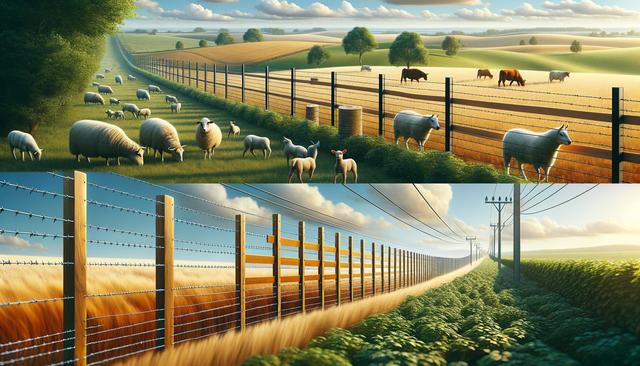
Choosing the Right Farm Fence: A Guide to Effective Agricultural Fencing
Understanding Your Fencing Needs
Before installing any type of agricultural fencing, it’s important to evaluate the specific needs of your farm. Different animals and crops require different levels of protection, and the type of terrain can also influence your choice. Start by identifying the primary purpose of the fence—whether it’s to contain livestock, protect crops from wildlife, mark property boundaries, or a combination of these purposes.
Common considerations include:
- Type of livestock or wildlife involved
- Durability and maintenance requirements
- Budget and installation costs
- Local regulations or zoning laws
For instance, fencing for cattle needs to be sturdy and tall enough to prevent escapes, while fencing for poultry must block smaller gaps to keep predators out. Understanding these factors early on allows you to invest in a solution that offers both security and efficiency for your operation.
Types of Agricultural Fencing
There are several types of fencing commonly used in agriculture, each with its own set of benefits and challenges. Choosing the right one depends largely on your farm’s layout and objectives. Here are some of the most widely used types:
- Woven Wire Fencing: Strong and flexible, suitable for various animals like sheep and goats.
- Barbed Wire: Cost-effective and efficient for cattle control, but not ideal for smaller animals.
- Electric Fencing: Versatile and easy to install, often used as a temporary or movable option.
- Wooden Fencing: Visually appealing and sturdy, great for horse enclosures but more expensive to maintain.
- High-Tensile Wire: Long-lasting and requires less maintenance, making it suitable for larger properties.
Each type has specific installation and maintenance needs. For example, electric fences require a reliable power source and regular voltage checks, while wooden fences may need regular painting or treatment to resist weather damage.
Material Selection and Durability
The material you choose for your fence plays a crucial role in its longevity and performance. Galvanized steel, treated wood, and synthetic materials are commonly used, each offering varying levels of strength and weather resistance. Selecting high-quality materials may require a larger initial investment but can reduce long-term costs associated with repairs and replacements.
Key factors to consider include:
- Resistance to rust and corrosion
- Impact resistance and flexibility
- Suitability for the local climate
- Ease of replacement of parts
For farms located in areas with high humidity or frequent rainfall, galvanized or coated materials are often recommended due to their resistance to rust. On the other hand, UV-resistant polymers can be a good choice in regions with intense sun exposure.
Installation Considerations
Proper installation is just as important as selecting the right fencing type and material. Poor installation can lead to sagging, gaps, or structural weaknesses that compromise the fence’s effectiveness. Decide whether you plan to install the fence yourself or hire a professional, and make sure to follow all safety and legal guidelines.
When planning the installation, keep the following in mind:
- Fence height and post spacing
- Soil type and terrain slope
- Access points for gates or machinery
- Anchoring and tensioning systems
Marking out the fence line accurately and using quality posts and anchors can significantly increase the lifespan of the fence. Additionally, gates should be placed in easily accessible areas to facilitate movement of livestock and equipment.
Maintenance and Long-Term Management
Once your farm fence is installed, ongoing maintenance is essential to ensure it continues to function effectively. Regular inspections can identify wear-and-tear issues before they become major problems. The frequency and type of maintenance required will depend on the materials used and the level of activity around the fence.
Maintenance tips include:
- Checking for broken wires, loose posts, or sagging sections
- Keeping vegetation trimmed around the fence line
- Repairing or replacing damaged components promptly
- Monitoring electric fences for voltage consistency
Seasonal adjustments may also be necessary. For example, in winter months, snow and ice buildup can damage certain fence types, so reinforcing or clearing the fence line might be required. A consistent maintenance schedule not only prolongs the life of your fence but also ensures the safety of your livestock and the security of your property.
Conclusion: Making Informed Decisions for Your Farm
Choosing the right agricultural fencing involves a balance between functionality, cost, and long-term sustainability. By understanding your specific needs, exploring available options, selecting durable materials, ensuring proper installation, and maintaining the fence regularly, you can create a secure and efficient fencing system tailored to your farm. Whether you’re managing a small homestead or a large agricultural operation, investing time in making informed fencing decisions can lead to better protection, reduced costs, and improved peace of mind.


